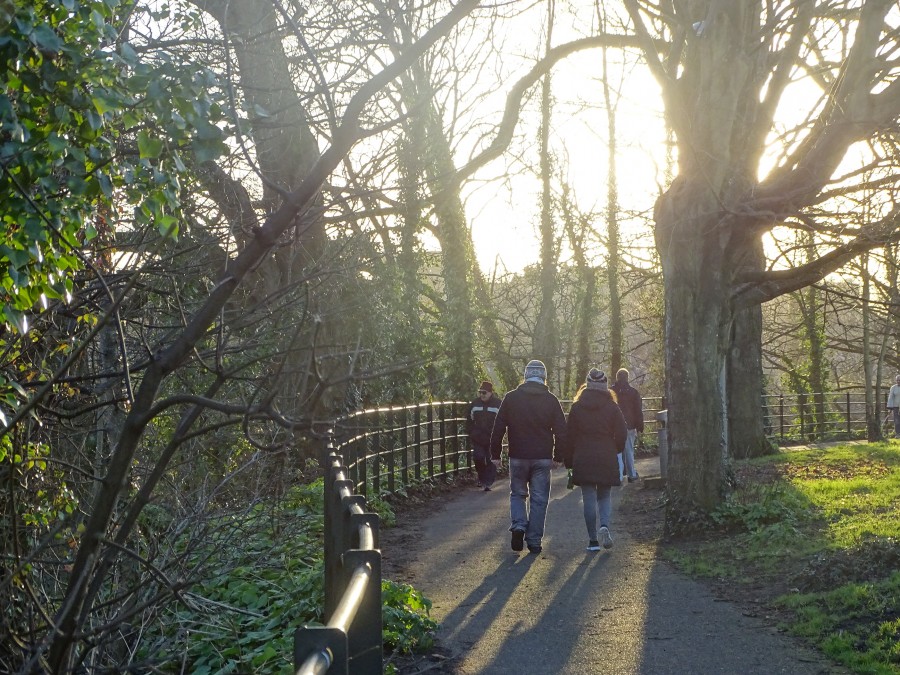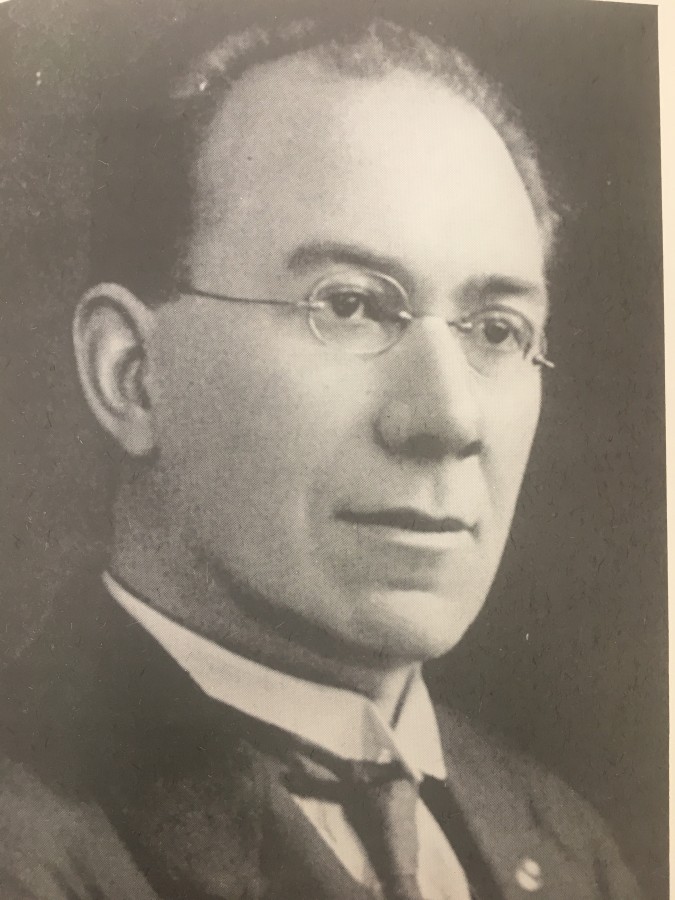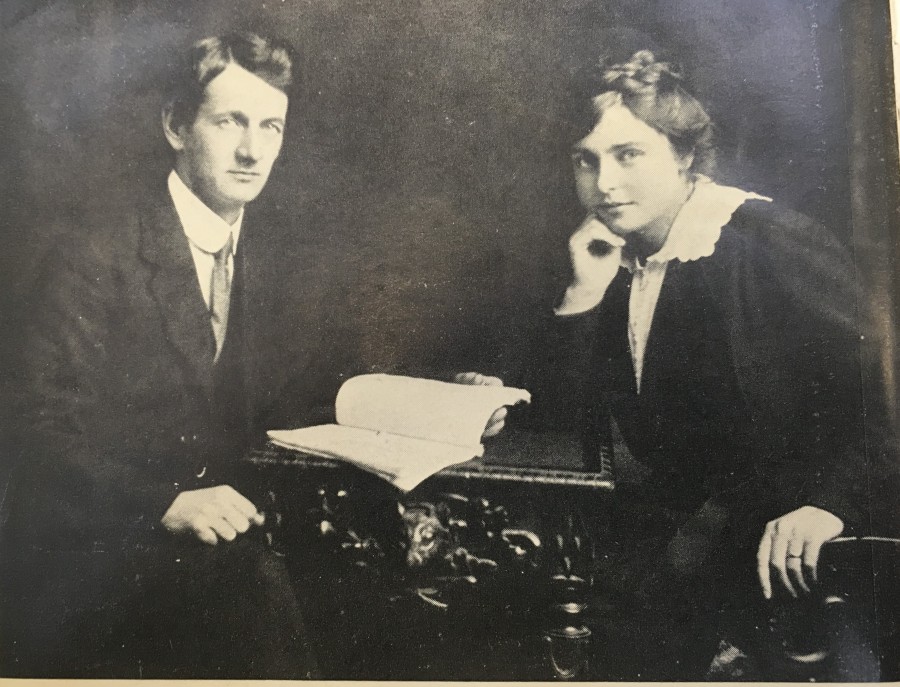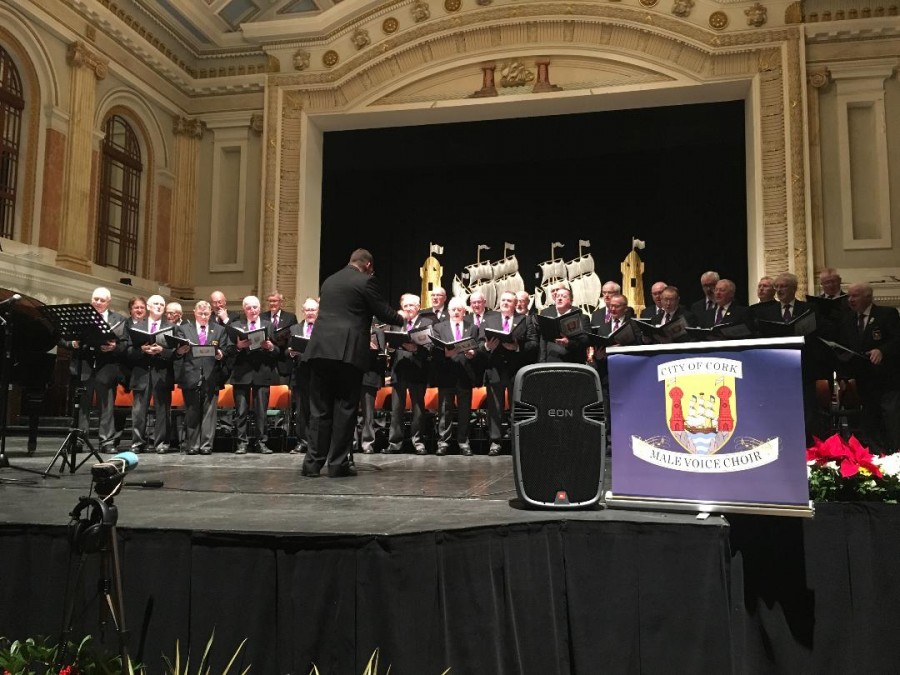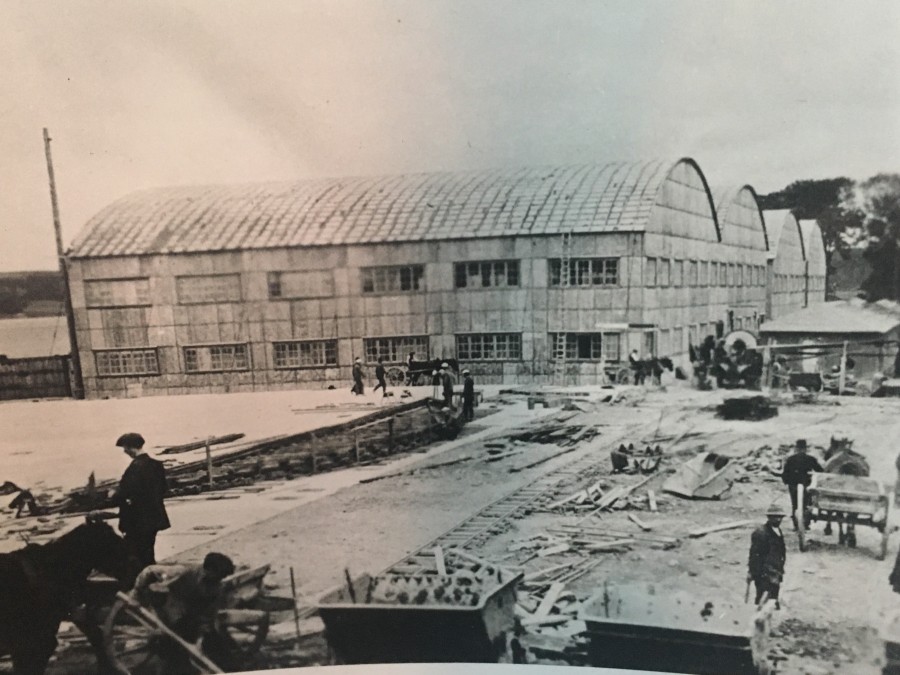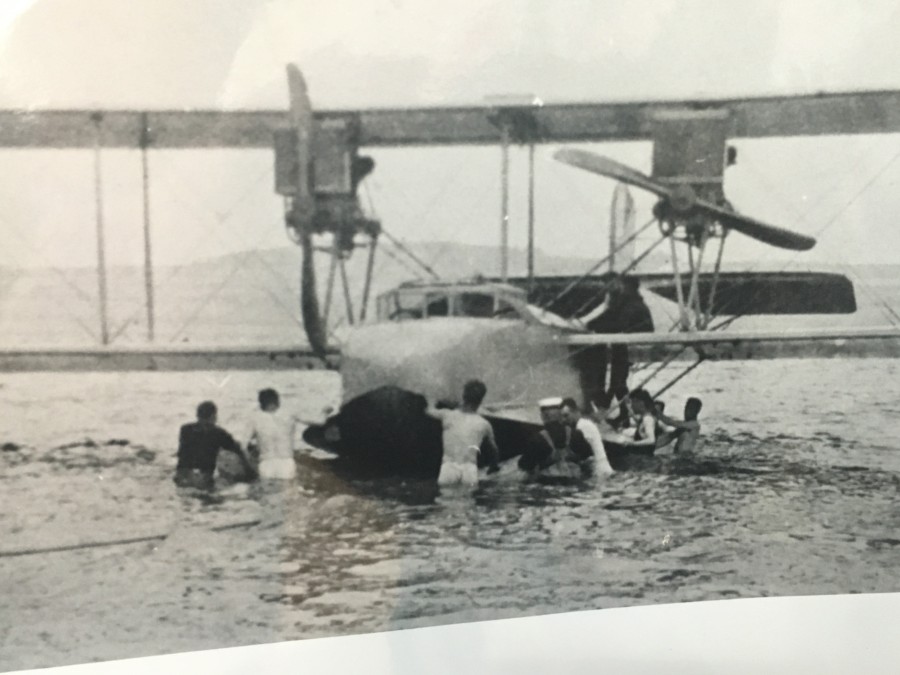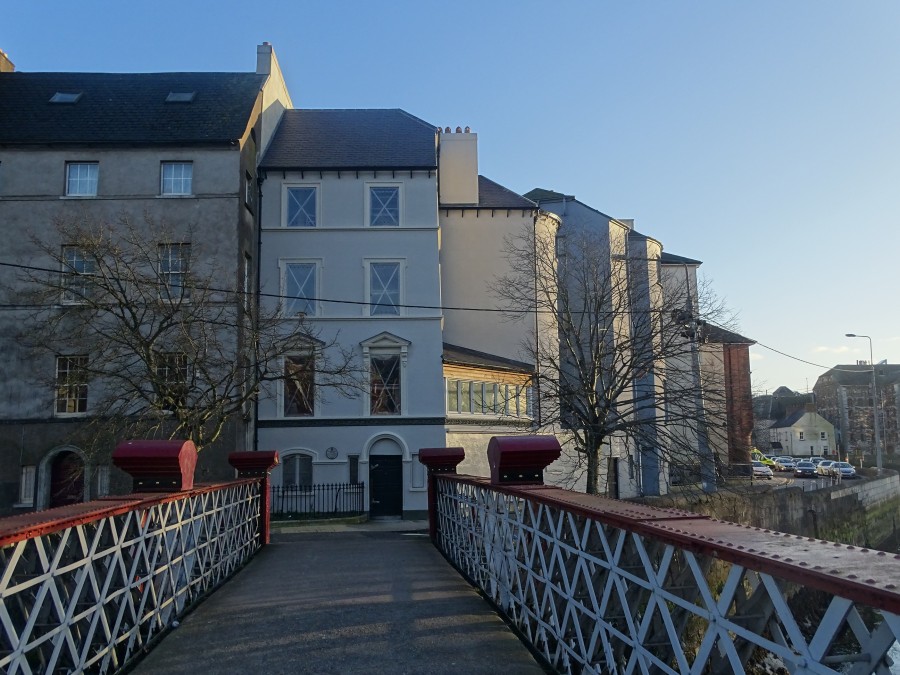Kieran’s Our City, Our Town, 20 December 2018
Kieran’s Our City, Our Town Article,
Cork Independent, 20 December 2018
Stories from 1918:
A Crushing Electoral Victory by Sinn Féin
In December 1918, Sinn Féin swept to a crushing victory over the Irish Parliamentary Party (IPP) or Irish Nationalist Party. which aimed for Irish representation and recognition at any post war peace conference. The IPP policy was to leave negotiation to the British government. However, a new generation of young voters, and the increase of women voters over thirty, meant that vast numbers of new voters of unknown voter affiliation emerged. It changed dramatically the make-up of the Irish electorate. Except for Waterford City, Sinn Féin won every seat outside of Ulster. Sinn Féin MPs refused to sit in the House of Commons and instead formed Dáil Éireann in January 1919. The Irish Parliamentary Party, Irish Unionist Alliance, Labour Unionist Party and an Independent Unionist MP remained in Westminster.
On 28 December 1918, the results from Great Britain were the first to arrive. From noon onwards, results were regularly and rapidly sent to the offices of Cork, Dublin and Belfast evening papers. The Irish political tide was well estimated during the previous fortnight. That of Great Britain supplied many surprises, though there were few who failed to realise the extent of the costly campaign which Coalitionists waged to secure its decisive governmental majority. The surprises generally voiced were the defeat of the Asquithian Liberals and the failure of the Labour Party while as between Ireland and Great Britain the respective strengths at an early hour were sized up as Sinn Féin and Coalition.
Just before 7pm the result of the Cork poll was declared, and soon after the results were delivered from the upper steps of the Cork Courthouse to the people in waiting. Mr J J Walsh, who headed the Cork City MP poll, was seen descending the steps making his way to the street. He was instantly rushed and raised shoulder high, while from a number of women large bouquets of flowers were presented to him. Soon after Mr Liam De Róiste came in for as equally enthusiastic reception. This procession then passed through Great George’s Street (now Washington Street) and St Patrick’s Street, and back again to the Grand Parade.
James J Walsh, of Dublin origin, was a member of Cork Corporation and was for a long time connected with the GAA in the South, being Chairman of the Cork County Board for many years. He fought in the 1916 Rising, was sentenced to death, but afterwards he was commuted to penal servitude, and released under general amnesty. He went through forcible feeding and was on four hunger strikes including that under which Thomas Ashe died. He was also sentenced to two years’ hard labour for speeches delivered in the North.
Liam De Róiste was a Technical Instructor, was President of the Sinn Féin Executive, and was one of the earliest secretaries of the Cork Industrial Development Association. He was the author of several books and pamphlets on temperance and industrial development.
For Mid Cork Terence MacSwiney, was elected. He was in charge of the Cork Sinn Féin Volunteers up to Easter Week, and after the surrender in Dublin was deported. He was again arrested in May 1918, and deported, being in December 1918 in Lincoln Gaol. He was a commercial instructor and was an author of several national dramas and poems and. A fluent Irish speaker and scholar, he had been for many years an active Gaelic League proponent.
For Cork East David Kent was elected. After the Easter Rising he had been sentenced to death, which was commuted to five years’ penal servitude in connection with the resistance offered to police raid on his house at Castlelyons in 1916. David Kent was subsequently arrested in connection with a speech he delivered in North Cork, and the charge of inciting to murder was thrown out by the Grand Jury.
For Cork South Michael Collins was elected. He fought in the GPO at the Rising and was deported to Frongoch. On his return he was appointed Secretary of the Prisoners’ National Defence Fund.
For Cork East Diarmuid Lynch was elected. For his participation in the Easter Rising, he was sentenced to death which was afterwards commuted to ten years’ penal servitude. He was release due to the amnesty of 1917. He was arrested again in early 1918 and sentenced to two months’ imprisonment for his part in the well-known Sinn Féin Food Supply scheme. At the execution of his sentence, being an American citizen, he was deported to the US. He was a native of the Kinsale district and did prominent work for the Gaelic League including a special mission with Thomas Ashe to America.
For North Cork Padraic O’Keeffe was elected. He was for some years General Secretary of Sinn Féin up to his arrest in May 1918. He took part in the fighting in the GPO. At the time of his election he was a prisoner in England.
For Cork North East Thomas Hunter was elected. He had commanded the 4th Battalion of Volunteers at Jacob’s at the Easter Rising. He was sentenced to death, which was afterwards changed to penal servitude. He was released under the general amnesty, but was re-arrested in May last, and was at the time of his election in an English prison.
For Cork West Sean Hayes was elected. He fought in the GPO at the Easter Rising and was deported to Frongoch. After his release he returned to Cork and was appointed editor of the Southern Star when that paper was taken over by Sinn Féin.
Happy Christmas to all readers of the column
Missed a column this year, check out the indices at Kieran’s heritage website, www.corkheritage.ie
Kieran’s new book, Cork in Fifty Buildings (2018, Amberley Publishing) is now available in Cork bookshops.
Kieran is also showcasing some of the older column series on the River Lee on his heritage facebook page at the moment, Cork Our City, Our Town.
Captions:
977a. Liam De Róiste, c.1918 (source: Cork City Library)
977b. Terence McSwiney and Muriel 1919 (source: Cork City Library)
977c. Michael Collins, 1919 (source: Cork City Library)
Deputy Lord Mayor, Cork Male Voice Choir, 50th Anniversary Event, 9 December 2018
50th Anniversary, Cork Male Voice Choir Concert,
9 December 2018
Concert Hall, Cork City Hall
Deputy Lord Mayor, Cllr Kieran McCarthy
Distinguished Ladies and gentlemen,
How oft do my thoughts in their fancy take flight
To the home of my childhood away,
To the days when each patriot’s vision seem’d bright
Ere I dreamed that those joys should decay.
When my heart was as light as the wild winds that blow
Down the Mardyke through each elm tree,
Where I sported and play’d ‘neath each green leafy shade
On the banks of my own lovely Lee.
Being sent in as the warm-up act to tonight’s special concert presents its challenges to go before the talented performers, we will hear this evening.
What may come across as a random act of breaking into song by one deputising for the Lord Mayor, can be attributed to my long-held wish to want to sing on this stage and indeed test the acoustics of this great hall.
This hall specifically opened 82 years to host concerts of light opera and musical theatre like those we are about to hear this evening. And if you don’t believe me, the West End- London Strand electrical boxes still ablazen the side wings.
What this concert celebrates here this evening is another act of randomness and another long-held wish but this time, from 50 years ago, through the idea of a small group of individuals initially who wanted to come together to sing and create a new community and cultural outlet in the city.
1968 Cork coincided with an industrial boom in Cork – Fords and Dunlops had just had their factories expanded and further mechanised. The Harbour area was booming with industrial elements such as Verolme and Whitegate all making their mark.
In the same year, Cork Corporation planned to expand its city boundaries to take in new housing estates, social and private, which had emerged in the previous 20-30 years. From Churchfield to Blackrock, new houses etched the city’s skyline. The first City Car parks were planned as the number of cars on the streets soared.
The Ballrooms of Romance such as the Arcadia shook with the sounds of new sounds, new music and the beat of new music. People swirled into the city’s suite of cinemas; they swirled in the city of the brand-new Opera House. It was a baby just then three years old, but you could still smell the new paint and feel the texture of the new seats.
In the midst of all of that was the birth of a male voice choir, community based, who captured the energy of an industrially charged City.
However, as Cork over the past fifty years has seen boom and bust – one of the strong constant denominators to witnessing such change and getting on with their raison d’être – has been the Cork Male Voice Choir.
Moments of Life:
I have no doubt there were moments in the early days when the founder members held firm on why they established the choir. Paddy Murray one of the original particpants is here this evening and is still singing with the choir. Tonight, we remember him and the founders for their tenacity and vision.
There were moments where the choir suffered the blows of members who left for various reasons or who passed away. Tonight, we remember past members and rejoice in the talents of the present members.
There have been moments in the multitudes of rehearsals where complex musical notes confounded even the sharpest of members. We remember those who stayed quiet and let the choir master and accompanists do their work.
There have been moments when a new Choir master arrived and where members like a student were anxious to see what empathy and teaching skill would come forth. We remember all the past choir masters for their dedication and vision.
There have been moments when family members of Choir members critiqued the small flecks of dirt on a suit or shirt to be worn – probably asking the said family member to “take that shirt off”, probably threw it in the wash and like out of nowhere presented a brand-new shirt. Tonight, we remember the support of family members not just from a clothes perspective, but who smiled and said in their own way, “no problem, it was great to see you on the stage. I am very proud of you”.
There have been moments where members brought their life concerns in their head to rehearsal and through song worked out a resolution. We remember those who sang up and went with the flow of the music.
There have been moments in a break of a rehearsal – when a fellow member asked “is there anything wrong” to another member and a worry was shared -and in that quiet moment or a rehearsal room – the power of solidarity and friendship prevailed to soften the blows of life. We remember those guardians of empathy and the listening ear.
There have been moments where choir members did not want concerts to end and the words of “Beautiful City”, charming and pretty – echoed into their heart and soul long after they left the stage. We remember those melodies which brought the audience along on a journey of discovery of pride and to that “haven of rest”.
There have been moments when members knew that at a moment in time – they were the guardians of some of the city’s favourite songs, and it they don’t sing and champion them – who would? We remember that as the choir champions the city’s musical culture; the city’s DNA – an intangible quality of all things Cork – is also embedded into the members.
Over the past fifty years, there have been many moments.
In truth, the members are all true Corkonians, guardians of what it means to be from Cork – Ireland’s southern capital, where its climate, geography, culture and history meets the Atlantic – where being a true Corkonian is perhaps the ultimate accolade.
So tonight, we celebrate fifty years, we reflect on the fifty years of its history and everyone associated with in the past, present and going forward. We thank the Cork Male Voice Choir for the journey they have taken the city on, and we think about the journey going forward.
Funds from this evening go to the Cope Foundation, who have also been on its own journey in the last fifty years, and who also deserve a whole speech themselves in another time and space.
I wish to thank the Sontarinas, Cope Foundation and also Cork’s first lady of song, Cara O’Sullivan, all of whom will also perform this evening.
Break a leg to all,
Go raibh maith agaibh.
Ends.
Cllr McCarthy: Investment in Technology for Libraries is a Must
Kieran’s Press Release:
Independent Cllr Kieran McCarthy has praised Cork Public Libraries staff on their vision to engage with the tech revolution connected to libraries.
In August of this year Cork City Council applied to the Department of Rural and Community Development for funding to enhance digital learning functionality in all seven libraries in the city. That Department has policy responsibility for the public library service, and had announced a major investment package for digital services and facilities in public libraries.
The Council was successful in its application and was authorized to spend up to €351,000 of which 75% would come from the Department, with the rest being matching funding by the Council. On receipt of approval the staff of the Council’s Libraries and ICT sections immediately began the procurement process. Because of the volume of hardware and software being purchased there were economies of scale, so that the total amount spent is slightly below the maximum allowed, at €349,000. This is the second year in succession that the Council has been awarded significant funding to enhance its Libraries.
Cllr McCarthy noted; it is great to see our public libraries developing a range of public functions. This grant aid has enabled the purchase and installation of a range of equipment in all libraries in the city such as portable digital Whiteboards, re-conditioned laptops for Coder Dojos, pod-casting equipment, portable PA, video and recording equipment and other related technology”.
“This investment will be a significant contribution to social and cultural inclusion, by bridging the digital divide for communities and individuals right across the city. Much of the equipment has already been delivered and installed, and the Library Service will be developing a digital strategy over the coming months, cooperation with relevant community groups, to make best use of this enhanced functionality”.
Cllr McCarthy: Progress Being Made on Film in Cork Initiative.
Kieran’s Press Release
Further information has been given to members of Cork City Council on the Film in Cork initiative which is being developed by Cork City and County Councils to promote the Cork region as a location for film production. The initiative has been successful in attracting a range of films to Cork, and productions such as The Young Offenders are raising the profile for Cork as a film friendly region. The contract for delivering the initiative is currently being supported by Pooleen Productions (Rossa Mullin) under a 4 year contract. Cork City and Cork County Councils will be tendering out the Film in Cork service over the next few months.
Independent Cllr Kieran McCarthy noted that the two councils are also actively engaged in working with a range of stakeholders to develop interest in the idea of developing a film studio for Cork. “Good progress in being made; As part of the ongoing efforts of both local authorities, the case is now being made to Government for Cork to be provided with the necessary incentives that will enable to the region to compete for audio visual activity on a more level playing field.
“In the recent budget, Government announced a number of measures to promote the film industry in Ireland. Section 481 film tax credit is proposed to be extended for a further 4 years with additional incentives for the regions (subject to state aid approval)”.
Kieran’s Our City, Our Town, 13 December 2018
Kieran’s Our City, Our Town Article,
Cork Independent, 13 December 2018
Stories from 1918: The Leaving of the American Navy
“On a very fine early summer afternoon in 1917 the Americans first entered the harbour in connection with the great war now ended. Their coming, except to the official few, was almost unknown until an hour or so before their actual arrival in port. From their first landing at Queenstown, they were gladly welcomed by its inhabitants, and their presence gave an added stimulus to an already prosperous war-trade being done in the town”. Queenstown Correspondent, Cork Examiner, 6 December 1918.
Immediately following the declaration of war by the USA on 6 April,1917, a force of destroyers of the US Navy set sail for Cork Harbour, arriving there on 4 May. At that time, the Naval Aviation Command was still in its infancy and not quite prepared for the task ahead. With rigid and untiring discipline, they were regularly viewed taking on the stormy waters of the Atlantic beyond Cork harbour. They treated unfortunate men, women and children who were victims of torpedo, collision, storm or mine. Many found safety on American destroyers.
The force based in Queenstown (now Cobh) consisted of 1200-ton sloops with trawlers, drifters, destroyers, motor launches and submarines, to which were later added minesweepers and disguised armed merchant ships known as ‘Q’ (for Queenstown) ships. The lower harbour area could be illuminated at night using searchlights located at all of the forts. From the beginning, the Americans built facilities for discharging and storing their inbound cargo. A railway sprang into being on the hitherto neglected Deepwater Quay, a store-house quickly covered a portion of its surface.
To mark this physical legacy and others, Cork County Council creating a trail setting out a number of key locations within the Harbour chosen for the role they played during the First World War. The development of the trail is due to the vision of the late Cllr Claire Cullinane who was a great advocate for the heritage potential of the whole of Cork Harbour and who initially proposed the trail.
During 1918, reference is made in the press to the American Navy presence in Cork Harbour. For example, on 4 July 1918 at Queenstown, the Stars and Stripes flew from many buildings and flagstaffs, and at Haulbowline Dockyard the American flag flew with the British. Shops were closed during the day and large numbers attended sports specially organised at Aghada and Ringaskiddy. In the evening a concert in the Bathe Hall, which was largely attended by officers of the American and British Navies.
On 25 July 1918, the First Lord of the British Admiralty, Sir Eric Geddes and Mr Franklin Roosevelt, arrived in Cork. Roosevelt, later to be President of the United States was Assistant Secretary of the Navy under President Woodrow Wilson during the First World War. Sir Eric Geddes went on a tour of inspection in the South of Ireland. He paid a visit to the Government Dockyard at Haulbowline and visited the US store ship Melville and the US air station at Aghada.
A total of twenty-five air stations were established throughout Europe, five of which were to be in Ireland. All the Navy’s seaplanes were shipped to Ireland in crates and taken to Aghada for assembly before delivery to their assigned stations. Aghada also became the main training base where all aircrew training was conducted. A further vital role for Aghada was as a patrol base, searching for German U-boats from Cape Clear eastwards into St George’s Channel. But some thirteen weeks after the first flight out of Aghada, the Armistice was signed on 11 November 1918, bringing patrols to an end. Production of aircraft, which had peaked at one completed every 3 days, came to a halt and the forty-eight officers and1,398 men began leaving Aghada.
In 1921 the 3 ½ -acre site of the old World War I American Air Base was purchased by the Lower Aghada Tennis and Sailing Club for the princely sum of £5 from the Land Commission. The club originally played in the Careystown area. Ten people from the area each contributed 10/- (50p) each, and two trustees, Messrs. Terence Murphy, NT and Edmund Russell. The actual playing surface was on the remains of the old runways.
On 5 August 1918, thirteen American Congressmen on a visit to the United Kingdom arrived at Kingstown (now Dun Laoghaire and then travelled by special saloon direct to Queenstown. They were members of the Committee of Naval Forces of the House of Representatives They were coming to Cork to see the activities of the U.S. Navy overseas and of the Allied Navies. In an interview Congressman Mr. Padgett from Tennessee noted that that during the month of July they had brought 317,000 troops to Europe and that was the high-water mark. Month by month they were continuing to bring soldiers over as rapidly as possible. America, he concluded, was determined “to go on to the end and win”.
When the Armistice was put in place on 11 November 1918, the Queenstown Correspondent for the Cork Examiner on 6 December 1918 noted: “To each and every departing member of the United States Navy based at Queenstown during the war, quarterdeck and lower deck alike, its inhabitants bid God speed and bon voyage”.
Kieran’s new book, Cork in Fifty Buildings (2018, Amberley Publishing) is now available in Cork bookshops.
Kieran is also showcasing some of the older column series on the River Lee on his heritage facebook page at the moment, Cork Our City, Our Town.
Captions:
976a. American Air Base, Aghada, c.1918 (source: Aghada Historical Society & Cork Harbour Heritage Alliance)
976b. American Air Base, Aghada, County Cork, c.1918 (source: Aghada Historical Society & Cork Harbour Heritage Alliance
Heritage Podcast with Kieran
Thanks to Ainle O Caireallain at the Rebel Matters Podcast for interviewing me on my passion for Cork Heritage and creating a whole podcast! It is over an hour long!
http://directory.libsyn.com/episode/index/id/7825355
Kieran’s Question to CE and Motions, Cork City Council Meeting, 10 December 2018
Question to CE:
To ask the CE about the mechanisms in place to combat homelessness this winter in the city?
How many homelessness cases on the streets in the first weekend (1st/2nd) of December 2018?
Are their beds available for all homelessness at this point in time in the city (early December 2018)?
How many emergency accommodation units?
To ask for the breakdown of finance given to housing homeless agencies in the city in 2017 & 2018? (Cllr Kieran McCarthy)
Motion:
Motion: That the City Council organise an annual tree planting & biodiversity day with interested communities (Cllr Kieran McCarthy)
Cllr McCarthy: New Art Graffiti Space Found
Kieran’s Press Release:
Independent Cllr Kieran McCarthy has welcomed news that Council officials from the Tourism, Events Arts, and Marketing Directorate have met with the Graffiti Artists who were involved in the development of the graffiti space at White Street car park. It has been agreed that the relevant stakeholders would to work together to identify a suitable site. A wall near Fitzgeralds Park has been identified as the preferred location by all. Further engagement with the artists is ongoing to agree on any works that may be necessary for the new location to be made fit for purpose.
Cllr McCarthy noted; “I had two reasons for my recent motion. Firstly I am conscious of how used the former Whites Street carpark was for graffti art; much of it was very good and some walls were changed every month. The walls did reduce the amount of graffiti in town, providing a space for artists. All in all the works pursued on the carpark walls were possibly underestimated and not celebrated in any great way. Much of it was high quality. Secondly I am also conscious of the very positive response to the Mad About Cork murals about town on traffic and ESB boxes. In my own opinion all are tastefully done and don’t aim to insult anyone. In that light my recent motion aims to capture the work of large scale street art in a new space in the city”.
Kieran’s Our City, Our Town, 6 December 2018
Kieran’s Our City, Our Town Article,
Cork Independent, 6 December 2018
Stories from 1918: Plans for the Marsh
Discussions on the influenza epidemic, poverty and housing prevailed across the meetings of Cork Corporation in late November and early December 1918. At the public health committee of Cork Corporation on 26 November 1918 Mr J Horgan (vice-chairman) presided. Dr D D Donovan, Superintendent Medical Officer of Health, reported that the dispensary medical officers had reported 117 cases of influenza in their districts during late November as against 500 cases in previous reports. The spread of influenza still| continued, according to the doctor, in a “mild character”, with a few exceptions. It was visibly on the decline and not in epidemic form. Dr O’Donovan noted: “sporadic, cases, however, must be expected to occur for some time, and I hope that in a week or so the disease will completely disappear”.
The number of deaths registered from influenza, and pneumonia for the four weeks ending Saturday, 16 November were as follows – 30 deaths occurred from influenza, 17 civil and 13 military and from pneumonia, 14 civil and 5 military. The Vice Chairman said on the whole the report was very satisfactory. He thought that Cork had escaped the worst of the epidemic. Alderman O’Sullivan agreed with the chairman and said the fact that they had escaped so well was due largely to the precautions taken by the committee.
A joint meeting of the Public Health and Housing Committees of the Corporation was also held on 26 November 1918. Alderman Sir Edward Fitzgerald presided. Alderman P Stack said that during previous years a number of houses had been demolished in the West ward, and all Hanover Street had completely disappeared so far as housing accommodation was concerned, including the lower end of Grattan Street, Portney’s Lane, Broad Lane, Thomas Street, and Bachelor’s Quay. There was no part of the city more in need of housing accommodation than the West Ward and he expressed the need for new housing schemes.
The Chairman Sir Edward Fitzgerald said he intended to bring before the Committee what he considered was a want left unfulfilled for the previous 30 years. Whenever a housing scheme was on hand the strongest argument in its favour was to get rid of the slums on a proposed site. There was no trouble securing sites outside the city. However, he deemed the flat of the city – the Marsh and the Coal Quay was being forgotten about. There were a number of people living in those localities who could not go to live in proposed places such as Gurranabraher, Mayfield, or elsewhere. He suggested that they should offer a prize of £150 for an accepted design scheme of overhauling the Marsh and Coal Quay districts, and the “rookeries” in the adjoining lanes and alleys. He noted: “The houses should of course be as cheaply built, as possible, but the need was immediate. They could first build a dozen or two, and then continue to build others when they had those completed”.
The City Solicitor present highlighted the West Ward scheme had not been shelved and was quite as advanced as any other scheme. He detailed that the trouble was that the Corporation were unable to get any information as to the intentions of the Government. He was certain that the moment it became known what the Government meant to do with regard to the financial part of the Housing question, on what terms they could borrow money or what contribution the State was going to make, if any – the Council schemes in Cork could be pushed ahead; “it would not be his fault, or, he was sure, the fault of the Committees, if their schemes were not the most advanced in Ireland”.
The Chairman said the City Engineer should be directed to make plans in connection with the Marsh site from the Main Street to the Mercy Hospital, with a view to having information of the fullest character preparatory to the holding of an inquiry later on. His suggestion was agreed to. The City Engineer submitted photographs of small open spaces in the city, and the Medical Officer of Health was asked to inspect those, and report whether they were suitable sites. From a development perspective it would take another 30 years before new social housing was developed in the Marsh area of the city.
Alderman O’Sullivan reported that he attended the Conference of the Irish Municipal Authorities in Dublin. A report presented strived to allocate 1,250 new houses to Cork. It was discussed, and those present maintained that the minimum number of houses should be double that number, namely 2,500 not including the reconstruction of old houses which the City Engineer estimated at 2,000. Mr Cowan, Chief Inspector of the Local Government Board, agreed that the Cork demand for 2,500 new houses was, in his opinion, “reasonable”, and in his report to the Local Government Board he recommended it. Alderman O’Sullivan did not wish to make anything in the nature of political capital out of it, but he thought this scheme demonstrated the necessity of having Irish members in Parliament when the Bill came before the House. When the Bill formerly came before the House it was intended as a purely British measure, but Ireland was included as a result of the continued pressure of the Irish Nationalist Party.
Kieran’s new book, Cork in Fifty Buildings (2018, Amberley Publishing) is now available in Cork bookshops.
Kieran is also showcasing some of the older column series on the River Lee on his heritage facebook page at the moment, Cork Our City, Our Town.
Captions:
975a. Recently renovated house, formerly a residence of mathematician George Boole on Batchelor’s Quay, present day (pictures: Kieran McCarthy)
975b. Wintry perspectives, Banks of the Lee Walkway, from North Mall to the Mardyke, present day
975c. Batchelor’s Quay, c.1900 – former late eighteenth century and early nineteenth century dwellings became slums hosting 15-20 families at a time over a hundred years; many of such buildings were demolished in the early twentieth century.
